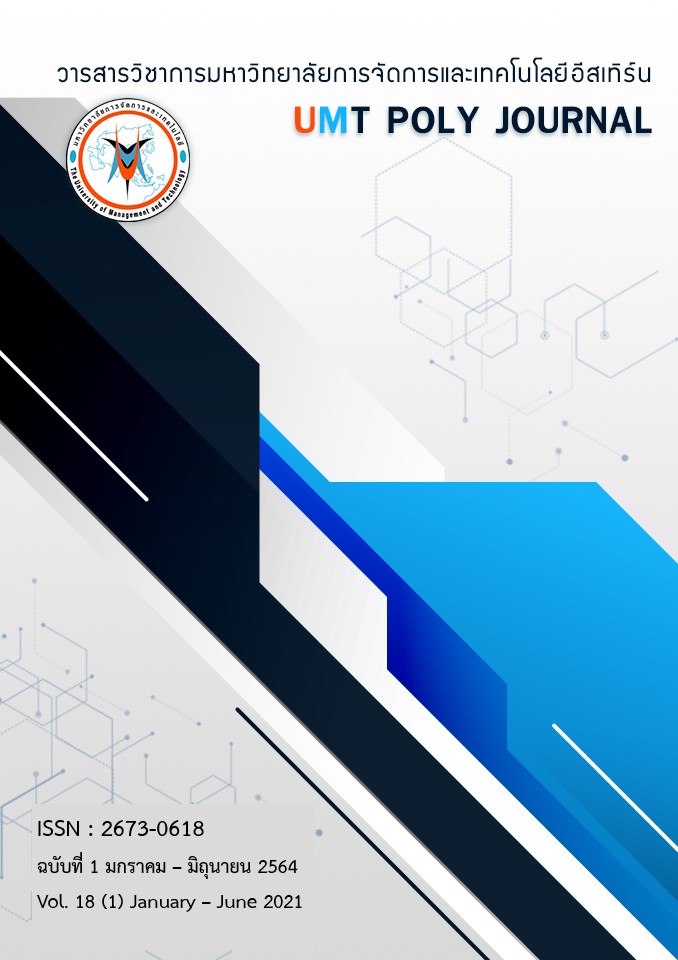English intransitives with objects
an elusive grammar point in textbooks
คำสำคัญ:
intransitive verbs, cognate object constructions, pedagogical grammar, grammar booksบทคัดย่อ
คำอกรรมกริยาบางคำในภาษาอังกฤษ เช่นคำว่า live, die และ dream แท้ที่จริงแล้วเป็นคำกริยาที่มีกรรมรองรับตามหลังได้ แต่จากการสำรวจหนังสือไวยากรณ์ภาษาอังกฤษขั้นสูงที่ตีพิมพ์โดยสำนักพิมพ์ใหญ่ ๆ ของต่างประเทศและเป็นหนังสือไวยากรณ์ที่นิยมใช้กันอย่างแพร่หลาย เราพบว่าหนังสือไวยากรณ์เกือบทุกเล่มละเลยที่จะพูดถึงคำกริยาชุดนี้ และถึงแม้ว่าจะมีหนังสือไวยากรณ์บางเล่มที่เอ่ยถึงประเด็นนี้บ้างก็ตาม หนังสือไวยากรณ์เหล่านั้นก็ยังขาดคำอธิบายที่ชัดเจนเกี่ยวกับคำอกรรมกริยาชุดนี้ ประเด็นนี้ทำให้เราเห็นถึงช่องว่างของตัวความรู้ทางภาษาศาสตร์ภาษาอังกฤษและเนื้อหาไวยากรณ์ภาษาอังกฤษที่มีการนำเสนอสอนในหนังสือเรียนไวยากรณ์ บทความฉบับนี้จึงนำเสนอแนวทางการสอดแทรกเนื้อหาการสอนคำอกรรมกริยาชุดนี้ในหนังสือไวยากรณ์ภาษาอังกฤษ โดยอาศัยข้อมูลจากคลังข้อมูลทางภาษา (corpus) และพจนานุกรมออนไลน์ เป็นพื้นฐาน ผนวกกับการนำเสนอเนื้อหาที่เป็นไปตามแนวคิดหลัก ๆ ในการสอนไวยากรณ์ที่มีการอ้างอิงอย่างกว้างขวางและเป็นที่นิยมใช้กันในปัจจุบัน ข้อมูลที่นำเสนอในบทความฉบับนี้จึงสามารถนำไปใช้เป็นตัวอย่างในการนำเสนอเนื้อหาประเด็นนี้ในหนังสือไวยากรณ์ได้
Downloads
เอกสารอ้างอิง
https://www.oxfordlearnersdictionaries.com/definition/english/fight_1?q=fight
Höche, S. (2009). Cognate object constructions in English: A cognitive-linguistic account. Tübingen: Narr.
Huddleston, R., & Pullum, G. K. (2002). The Cambridge grammar of the English language. Cambridge: Cambridge University Press.
Kim, J., & Lim, J. (2012). English cognate object construction: a usage-based construction grammar approach. English Language and Linguistics, 18(3), 31-55. https://doi.org/10.17960/ell.2012.18.3.002
Jones, M. A. (1988). Cognate objects and case filter. Journal of Linguistics, 24(1), 89-111.
https://doi.org/10.1017/S0022226700011579
Macfarland, T. (1995). Cognate objects and the argument/adjunct distinction in English (Unpublished doctoral thesis). Northwestern University, Evanston, IL.
Massam, D. (1990). Cognate objects as thematic objects. Canadian Journal of Linguistics, 35(2), 161-190.
McCarthy, M. (2015). The role of corpus research in the design of advanced-level grammar instruction. In M. Christison, D. Christian, P. A. Duff & N. Spada (Eds.), Teaching and learning English grammar: Research findings and future directions (pp. 87-102). New York, NY: Routledge.
Meunier, F., & Reppen, R. (2015). Corpus versus non-corpus-informed pedagogical materials: Grammar as the focus. In D. Biber & R. Reppen (Eds.), The Cambridge handbook of English corpus linguistics (pp. 498-514). Cambridge: Cambridge University Press.
Min, J. Y. (2013). Korean EFL learners’ recognition of English obligatory adjuncts. Language Research, 49(2), 169-203.
Park, H. (2008). Syntax-pragmatics interface in L2 learning: the case of obligatory adjuncts in English. Studies in British and American Language and Literature, 87, 175-197. https://www.kci.go.kr/kciportal/ci/sereArticleSearch/ciSereArtiView.kci?sereArticleSearchBean.artiId=ART001254808
Quirk, R., Greenbaum, S., Leech, G., & Svartvik, J. (1985). A comprehensive grammar of the English language. London: Longman.
Römer, U. (2005). Progressive, patterns, pedagogy: A corpus driven-approach to English progressive forms, functions, contexts and didactics. Amsterdam: John Benjamins.
Smile. (2020). In Oxfordlearnersdictionaries.com dictionary. Retrieved from
https://www.oxfordlearnersdictionaries.com/definition/english/smile_1?q=smile
Tognini-Bonelli, E. (2001). Corpus linguistics at work. Amsterdam: John Benjamins.
VanPatten, B., Williams, J., & Rott, S. (2004). Form-meaning connections in second language acquisition. In B. VanPatten, J. Williams, S. Rott, & M. Overstreet (Eds.), Form-meaning connections in second language acquisition (pp. 1-26). Mahwah, NJ: Lawrence Erlbaum.
Appendix: List of EFL grammar books
Azar, B. S., & Hagen, S. A. (2016). Understanding and using English grammar (5th ed.). White Plains, NY: Pearson.
Biesenbach-Lucas, S., & Brantner-Artenie, D. (2013). Next generation grammar 4. White Plains, NY: Pearson.
Collins. (2013). Work on your grammar: Advanced. London: HarperCollins.
Ediger, A. M., Santamaria, J. C., & Falk, R. (2016). Elements of success 4. New York, NY: Oxford University Press.
Foley, M., & Hall, D. (2012). MyGrammarLab: Advanced. Harlow: Pearson.
Hewings, M. (2013). Advanced grammar in use (3rd ed.). Cambridge: Cambridge University Press.
Lloyd, M., & Day, J. (2011). Active grammar: Level 3. Cambridge: Cambridge University Press.
Mann, M., & Taylore-Knowles, S. (2008). Destination C1& C2: Grammar & vocabulary. Oxford: Macmillan.
Maurer, J. (2012). Focus on grammar 5 (4th ed.). White Plains, NY: Pearson.
Swan, M., & Walter, C. (2011). Oxford English grammar course: Advanced. Oxford: Oxford University Press.
Vince, M. (2007). Macmillan English grammar in context: Advanced. Oxford: Macmillan.
Yule, G. (2019). Oxford practice grammar: Advanced. Oxford: Oxford University Press.
ดาวน์โหลด
เผยแพร่แล้ว
ฉบับ
ประเภทบทความ
สัญญาอนุญาต
ประกาศลิขสิทธิ์
เนื้อหาและข้อมูลในบทความที่ลงตีพิมพ์ในวารสารวิชาการมหาวิทยาลัยการจัดการและเทคโนโลยีอีสเทิร์น ถือเป็นข้อคิดเห็นและความรับผิดชอบของผู้เขียนบทความโดยตรง ซึ่งกองบรรณาธิการวารสารไม่จำเป็นต้องเห็นด้วยหรือร่วมรับผิดชอบใด ๆ
บทความ ข้อมูล เนื้อหาหรือรูปภาพ ฯลฯ ที่ได้รับการตีพิมพ์ในวารสารวิชาการมหาวิทยาลัยการจัดการและเทคโนโลยีอีสเทิร์น ถือเป็นลิขสิทธิ์ของวารสารวิชาการมหาวิทยาลัยการจัดการและเทคโนโลยีอีสเทิร์น หากบุคคลหรือหน่วยงานใดต้องการนำข้อมูลทั้งหมดหรือบางส่วนไปเผยแพร่ต่อหรือเพื่อกระทำการใด ๆ จะต้องได้รับอนุญาตเป็นลายลักษณ์อักษรจากวารสารวิชาการมหาวิทยาลัยการจัดการและเทคโนโลยีอีสเทิร์นก่อนเท่านั้น




